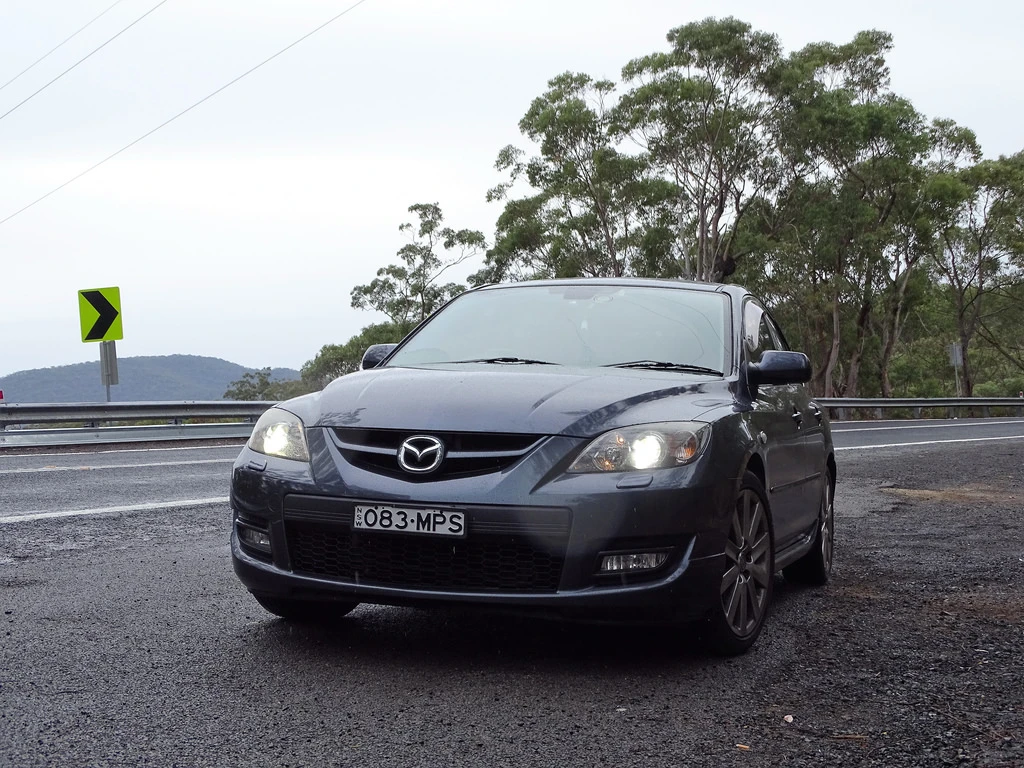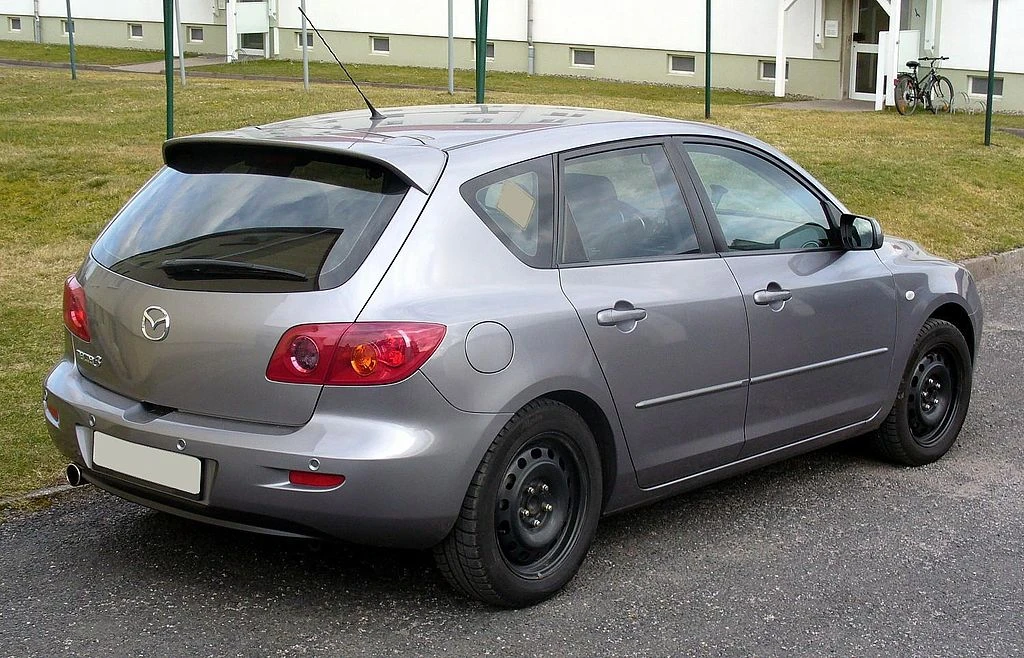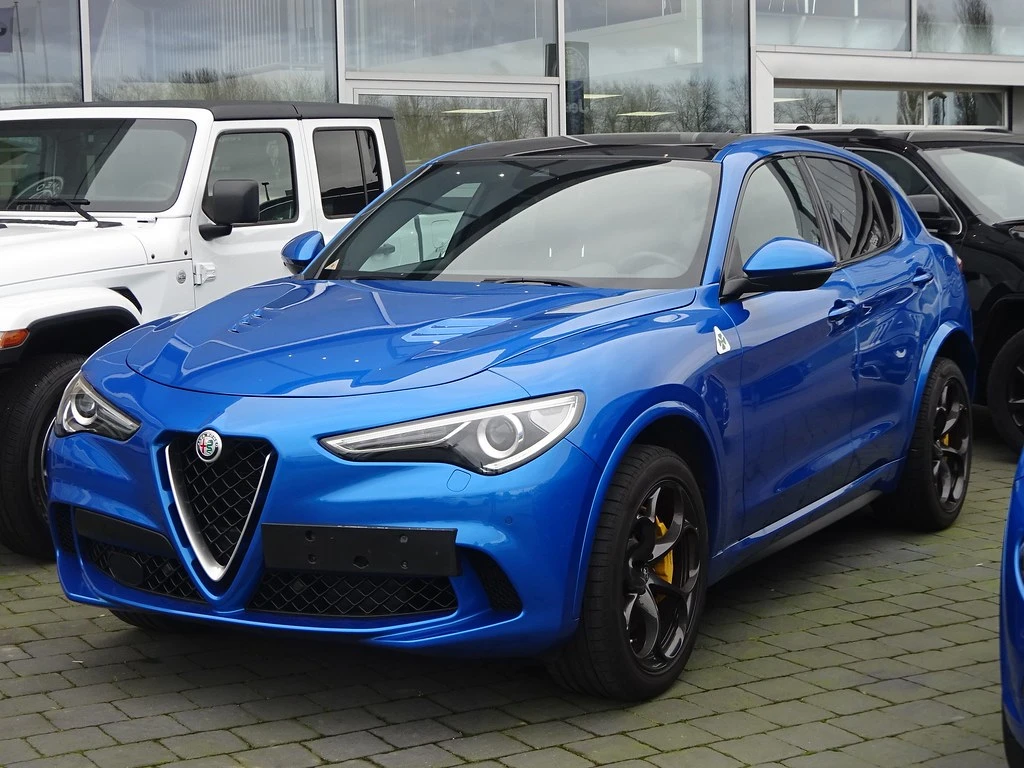Review : Mazda 3 BK ( 2003 – 2008 )

Mazda 3 BK, when you are too hipster for your neighbor's Focus. Mazda 3 BK, a cheaper Ford Focus. Is it? Or maybe it's just an old-school Japanese hatchback?
The Mazda 3 BK came in 2003 to retire the old 323 and was one of the first cars built under Ford's bootcamp. It's just that unlike the original Octavia, which was a cheaper and lower-quality Golf IV, but mechanically identical, the Mazda 3 BK differs from the Ford Focus and the Volvo S40 in a few ways.
- First of all, all the engines are Mazda's own recipe. If the Focus and the Volvo S40 have Ford, Mazda and Peugeot engines (with Volvo keeping only the engine and coming with its own auxiliaries), Mazda kept it's own engines. Which means that we have their petrol engines, with legendary reliability and decent sportiness, as well as with a diesel as good as a spoiled beer, left to rot in the sun. You can drink it, but at what price?
- And since we were talking about engines, Mazda also came with its own 270-horsepower, turbocharged 2.3 powerplant under the hood of the Mazda 3 MPS. A very interesting move considering that in 2002 the term hot hatchback was 8 years away from popularity. Moreover, the Ford Focus ST used the Volvo-sourced, 225 horsepower 2.5 turbocharged petrol, and this Mazda engine would eventually become the base for the 2.3 EcoBoost that was also installed on the 2015 Mustang.
- Otherwise, we have the same sporty recipe taken from the Ford Focus and used on the Mazda 3 BK. Independent front suspension, disc brakes for both the front and rear, ABS and other complicated words and acronyms that I don't understand but I use because they make me look good. I also like to photosynthesis.
And how did the Mazda 3 BK do?
Whilst a Focus was already all the car you ever needed, the Mazda remained a car that catered to either enthusiasts who jumped at the 2 litre petrol engine or people who couldn't afford more and went for the not-so-tarmac-tearing 1.4 petrol unit. A smaller, lighter and sportier Focus, in a world of compacts that in 2005 were only practical city cars, not sports cars. Sports is what you wanted from a reasonably priced car? You had the Toyota Celica, Hyundai Coupe, Honda Civic, Mazda MX-5 and BMW E36. So the Mazda 3 BK was a car ahead of its time. This means that today if you want a sports car, reliable and cheap, the Mazda 3 is for you.

Mazda 3 BK Engines
Petrol
- 1.4 MZR Z of 84 horsepower - Yes, it's marginally more powerful than the Golf V with a similarly powerful 1.4 naturally aspirated petrol, but it's like saying you run faster than the guy with 2 crutches, mostly because you have only one crutch. At least it's reliable. Very reliable. Unbelievably reliable.
- 1.5 MZR ZY-VE of 118 horsepower - Refurbished from the previous Mazda Familia, this engine was Japan exclusive and it was the only small petrol engine they had. Not great, not terrible.
- 1.6 MZ ZM-DE of 105 and 110 horsepower – It's not quite the fun of the 2.0, but at least it's part of the same MZR family. A decent engine that needs many and constant revolutions to provide performance. If you have a civilized driving style, it will seem like a gutless engine. If you have the right driving style, you will find it a fantastic engine for what it costs to run.
- 2.0 MZR L and MZR LF-VD of 150 horsepower – This is where all the fun is. Comically, you find more Mazda 3s with this engine than Mazda 6 GGs. The most powerful aspirated gasoline engine from Mazda also comes on the little 3 and is ready to punch your testicles (or ovaries) every time you leave the traffic lights. 2.0 MZR – the official Fast and Furious engine. Probably.
- 2.3 MZR L of 160 and 170 horsepower - Yes, sure, they had this engine in naturally aspirated guise, butt why? The 2 litre lump is about as powerful, but it's easier on taxes. This engine says about you that you are too rich for the 2.0 but not rich enough for the full beef wellington.
- 2.3 Turbo MZR L of 260 horsepower - The fabulous Mazda 3 BK MPS is a real automotive beef wellington. But good luck finding one. By the way, this engine was the basis of the engine on the 2015 Mustang. And the clutch tends to fail under the enormous power, and the timing chains will cost an arm and a leg to replace, but hey, you got 260 mighty horsepower under the bonnet of one of the first modern hot hatchbacks.
Diesel
- 1.6 MZ-CD of 109 horsepower – The smallest and most popular engine on the Mazda 3, even if the whole idea of the car was to be a compact sports car with a compact petrol engine. But we europeasants only knows diesel, so he will have to be tolerated in this review, even if it is an engine of the same age as Boney M.
- 2.0 MZR-CD of 143 horsepower – The standard diesel from Mazda that took care to ruin their reputation. They didn't even need that 1.6 HDi from Peugeot to ruin their reputation, they ruined it themselves. We talk about issues in the common area about MZR-CD.
- 2.2 MZR-CD of 185 horsepower – In addition to the standard problems, you get problems with the turbocharger failures but also with the undersized clutch for this engine as well as a higher tax bracket than the 2 liter diesel. All this under the conditions that the car towing rate is standard.

Mazda 3 BK Reliability Issues
- The petrol engines have reliability, they have fairly resistant timing chains, they deliver decent performance, they have everything you want. However, somewhere late in life they start to run in front of the bus and to get tired and start chugging on oil, so be careful what you buy.
- Not much of a problem as much as a rumor - the Mazda 3 BK rusts more than Mr. Lahey if he were forced to drink water. Indeed, Mazda had this problem with rust, but only in countries with a humid climate, such as England. Standard European models do not have this problem, but it's well advised to check for undercarriage rust, especially if you live in a moist area. My moist area. Because I'm old and I only get moist nowadays.
- Like many cars from this period, the Mazda 3 also received a faulty ABS system, more specifically the G201 sensor. From the VW Touran to the BMW 1 Series, everyone joins the repair shop queue.
- And now on to the diesel engines... I left these at the end because there is a lot to talk about. As with the 2.0 TDI on the Passat B6, there are two types of engine that you have to look at. The ones without particle filter are ok, but they are Euro 3 and maybe for one of the two readers of Autodrivel, the emission standard matters. For those with a particle filter, the issue is something like this: The particle filter fails to regenerate completely and remains with unburned diesel. That unburnt diesel ends up walking through the system and at some point it contaminates the engine oil. How do you figure this out? The oil level starts to rise above the maximum level. No, it's not a miracle engine that produces oil like the VW ALH produces diesel, it's just full of contaminated oil. What happens if you don't bother to constantly check the oil level? There will come a time when the band N SYNC will come out of the boot and sing "Bye bye bye", it will take your engine and go with it to the old "iron".

Mazda 3 BK Verdict
A car that is definatelly not for anyone. Especially in 2024. It's a car aimed at thrill-seekers who have a tighter budget than the Libresse. Forget the diesel engines, forget the 1.4 petrol and go for the 1.6 or the 2.0 powerplants. It's a shame to have an independent, aerodynamic suspension and a car generally built for sports and put a non-sport engine. It's like having a Monster Energy can, but with Fosters beer inside. It's like going out on the town with a good girl who is also intelligent, but who laughs like a chainsaw. It's like going camping at Saint Moritz.
Which engines do I recommend? The 105 horsepower 1.6 petrol if you're short on dough, and the 150 horsepower 2.0 petrol 150 hp if you're not.
Similar Articles

Review : Nissan Juke F16 (2019 – present)

Review : Alfa Romeo Stelvio 949 ( 2017 – prezent )

Review : Nissan Juke F15 (2011 – 2019)
Write an answer
- Review : Nissan Juke F16 (2019 – present) 23 February 2025
- Review : Alfa Romeo Stelvio 949 ( 2017 – prezent ) 15 March 2025
- Review : Nissan Juke F15 (2011 – 2019) 23 February 2025
- April 2025
- March 2025
- February 2025
- January 2025
- December 2024
- November 2024
- October 2024
- August 2024
- July 2024
- June 2024
- May 2024
- April 2024
- March 2024
- February 2024
- January 2024
- December 2023
- November 2023
- October 2023
- September 2023
- August 2023
- July 2023
- June 2023
- May 2023
- April 2023
- March 2023
- February 2023
- January 2023
- December 2022
- November 2022
- October 2022
- September 2022
- August 2022
- July 2022
- June 2022
- May 2022
- March 2022
- April 2021
- January 2021
- December 2020
- November 2020
- October 2020
- September 2020
- August 2020
- July 2020
- March 2020